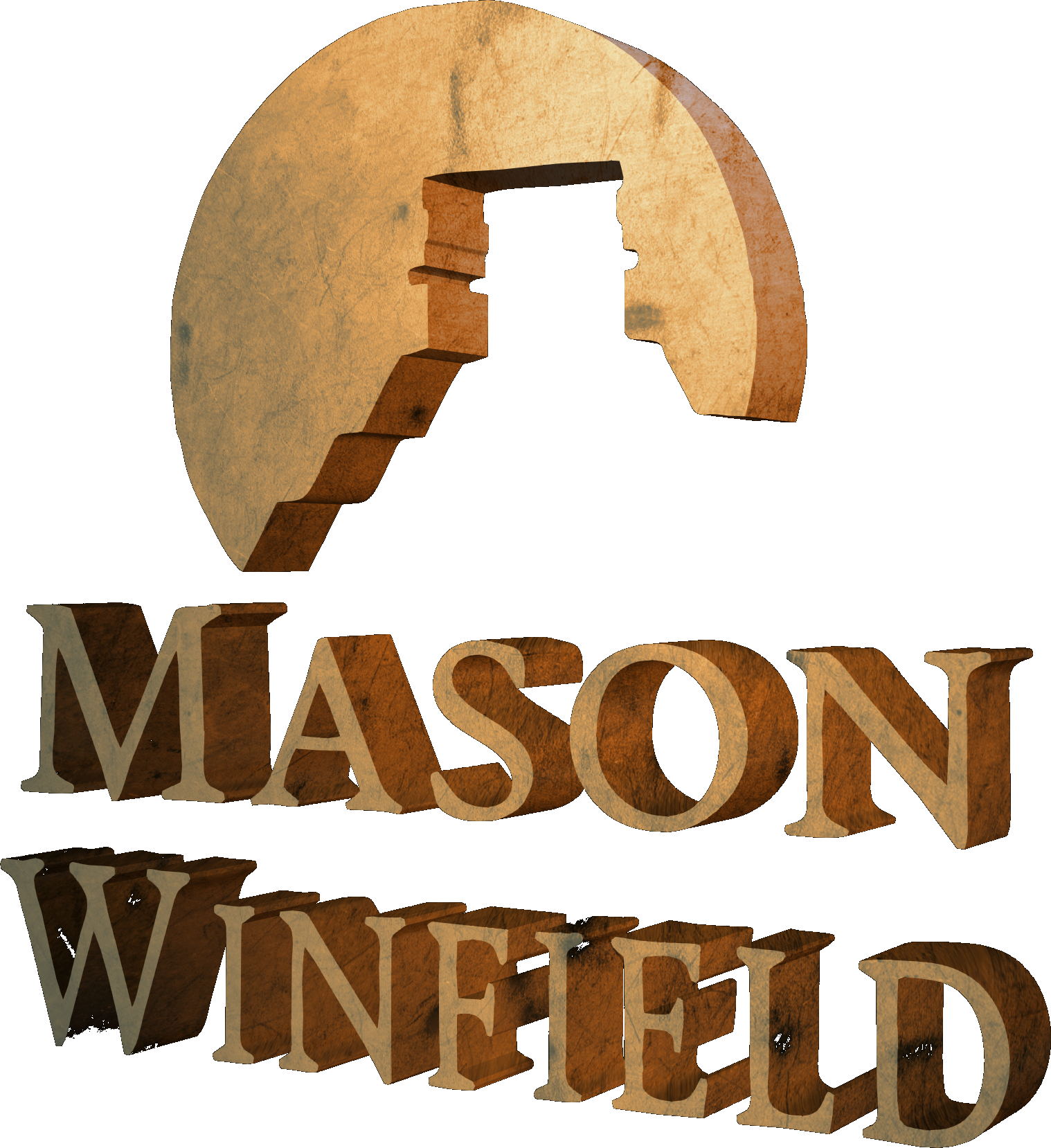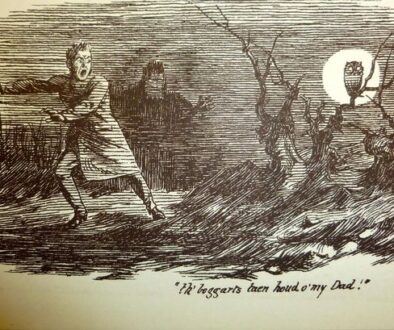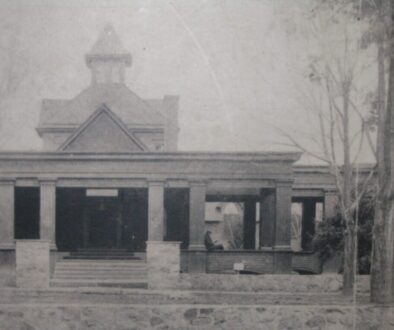The Damning of Goodleberg, Part 1
Yes, it’s that time of year again. The summer months are on us and it’s sure to get hot at the top of that hill holding the most prominent outdoor haunt on the Niagara Frontier and surely one of the most notorious, devastated, scandalous burying-grounds in New York State. Hold onto your hats, it’s Goodleberg… And here come the ghost-hunters! AIEEEEEEEEE!!!!!
I shriek that digitally from painful experience.
In the last twenty years of my publishing career I’ve profiled at least two hundred haunted sites along the Niagara Frontier and across upstate New York. At none of them has there been this kind of controversy. And none of them but this have ever involved me in the frenzy, at least not in any negative way. I honestly think there’s something special about this place they call Goodleberg, about which the wildest supernatural folklore has accumulated. One of the problems is figuring out why. First, a declaration.
I have written about places at which there have been tragedies. Battles, suicides, accidents. It does not mean I want any of that to happen to readers.
I am writing again today about a troubled, haunted cemetery. It does not mean that I want readers going to it, at least at night. It is illegal to be in any American burying-ground after dusk. That precept will be enforced – you will be arrested – at Goodleberg, a place that does not deserve what has happened to it.
Let’s get down to basics. For a burying-place this legendary, the history of Goodleberg is short and unimpressive.
The old cemetery in the Town of Wales, NY, is about thirty miles southeast of the city core of Buffalo. It was in use from 1811 to around 1927 and was doubtless the first cemetery of the tiny community of settlers – farmers, millers, and crafters – who lived atop the ridge four hundred feet above and two miles east of today’s Olean Road/Route 16. Once the old Native trail along the Cazenovia Creek and then a settlers’ cart track, this road in the early days of white settlement would have led trade and travel into the villages of East Aurora and Holland and past each, respectively, to Buffalo and the Southern Tier.
Most of Goodleberg’s hundred or so reclining tenants would appear to have been locals of German and Anglo-American ancestry. A troubling number of them seemed to have died young, maybe due to a cholera epidemic that hit the whole Niagara Frontier in the 1830s, but possibly due just to the ardors of life in the day.
Why has this small, plain, young (for burying-grounds) and fairly open site been so captivating to the pop imagination? Why has it become an internet sensation with an even national profile in the 21st century? I’ve struggled to understand it myself. My thinking has unfolded over time as follows.
There is a back-story about every haunted site of any significance in local tradition. I don’t know what the folklorists would call that, but in my own terms, this is the gossip, the scuttlebutt, the rumor-cycle that gets kicked around among the community of aficionados as the “explanation” for the hauntings and seems to grow upon itself across the decades. There are probably a dozen of these formulaic theories for hauntings at sites in general. You’ve probably seen all the motifs: incinerated escaping slaves; abortions; a serial killer; the home of a witch; domestic violence ending in murder; a lynching; a Native American massacre; Satanic activity; a battlefield.
One of the most common tropes still is the “Native American burial ground,” a catchall theory that accounts in the pop imagination for any ghostly/cursed activity – as if the two were the same – just the way “radiation” was the deus-ex-machina account for monstrosities in 50s/60s-style creature features. (See Godzilla.)
Any one of these urban legend theories seems causative to non-specialists. Any one seems to soothe the general psyche and allows the suspension of disbelief when illogical phenomena begins to be reported.
It does happen to be completely true that incidents of human trauma at a site tend to gather folkloric rumors about it. The fact is, though, that these pop “explanations” about haunted sites are often manufactured after the ghost stories have developed. And not many of them are even partly valid.
Maybe with that observation we’re getting closer to the answer of the vibrance of Goodleberg. The rumors here are about as close to the truth as you will ever find with so wildly storied a site.
The name is less likely to mean (as I once speculated) “Hill of the Ghouls” than it is to mean “Godly/Holy Hill.” (Berg, of course is a Germanic word for “mountain.”) For those in the know, the latter term is just as suggestive. Any spiritually powerful place in any culture has always been considered a likely site for visions, and sites often received edgy names, good or bad, because of a tradition of seeming supernaturally powerful. You see this especially in America with pre-Columbian power-sites, almost all of whom are still regarded as either holy or haunted by contemporary Native Americans. (Most of those have been regarded and named with suspicion by the first supplanting whites. Anything in the U. S. with a place-name of “Spook-,” “Snake-,” “Ghost-,” “Spirit-,” or “Devil” was likely once such a Native site.)
As for the truth at Goodleberg…
Yes, in the 1940s, an abortionist and “person of interest” in at least one death/disappearance did live within walking distance of Goodleberg.
Yes, there have been nocturnal ceremonies of some freelance variety in and around that cemetery.
Yes, mob hit victims have been found about the immediate area.
Yes, the road may be linked to a famous series of kidnap-murders.
More on all this to come. But don’t tell me people knew all that.
Most of it was rumored, but there are rumors just like that about almost every haunted site of even local prominence. No one in the wider community, no one but a few local historians, knew about even some of it at Goodleberg. I was the first person to write about Goodleberg from folkloric perspectives in 1997, and it had been a legend-site as a haunt for at least twenty years before that. The place was not thoroughly researched until a decade later, and by then the rise of the internet had already sent the rumor-cycle meltdown and launched Goodleberg as a sensation. Why?
In trying to catch the heart of Goodleberg’s mysterious fascination, I’ve come to suspect that people are drawn to Goodleberg because they just “feel” something about it, as if they perceive the validity of the rumors psychically or else as if some genius loci, some spirit of the place, speaks to them through something other than their physical senses. Maybe the place really is haunted, and powerfully.
The second article in this series will discuss the history of the place and my checkered history with it. The piece to follow that will discuss the categories of apparitions – ghosts – and other phenomena reported at Goodleberg. Let’s get the summer started right.




